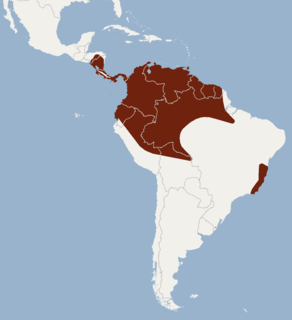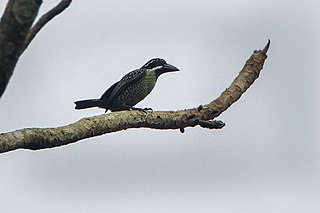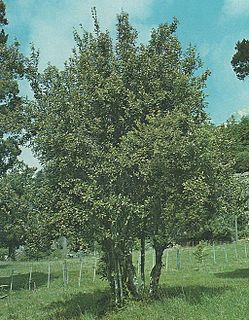
Ant spiders are members of the family Zodariidae. They are small to medium-sized eight-eyed spiders found in all tropical and subtropical regions of South America, Africa, Madagascar, Australia-New Guinea, New Zealand, Arabia and the Indian subcontinent. Most species are daytime hunters and live together with ants, mimicking their behavior and sometimes even their chemical traits. Although little is known about most zodariids, members of the genus Zodarion apparently feed only on ants; a number of other genera in the family are apparently also ant specialists.

The family Mormotomyiidae contains only one known species, Mormotomyia hirsuta, commonly known as the frightful hairy fly or terrible hairy fly, which is found in Kenya. The fly was first described by English entomologist Ernest Edward Austen, and specimens have been collected from one location on a mountain in the Ukasi Hill, in a cleft where a bat roost is located; this may possibly be the most restricted geographic distribution for any fly family. The larvae have been collected from bat guano. Adult flies are believed to feed on bodily secretions of bats. The fly measures about 1 cm long, with hairy legs, and, due to its nonfunctional wings and tiny eyes, looks more like a spider than a fly. Specimens have been collected only three times, in 1933, 1948, and 2010. Tested members of the population showed higher levels of genetic variation than would be expected for such a restricted range, suggesting additional undiscovered populations exist and gene flow occurs between them and the known population in Ukasi Hill.

Cardamine hirsuta, commonly called hairy bittercress, is an annual or biennial species of plant in the family Brassicaceae, and is edible as a salad green. It is common in moist areas around the world.
Palfuria is a spider genus of the family Zodariidae of which nine species from Africa have been described to date.
Palfuria caputlari is a spider species of the family Zodariidae.
Palfuria gladiator is a spider species of the family Zodariidae.
Palfuria harpago is a spider species of the family Zodariidae.
Palfuria helichrysorum is a spider species of the family Zodariidae.
Palfuria panner is a spider species of the family Zodariidae.
Palfuria retusa is a spider species of the family Zodariidae.
Palfuria spirembolus is a spider species of the family Zodariidae.
Palfuria gibbosa is a spider species of the family Zodariidae.

The hairy big-eared bat is a bat species from South and Central America.

Banksia hirta is a species of shrub that is endemic to Western Australia. It has hairy stems, deeply serrated leaves, pale yellow flowers in heads of about one hundred and shining follicles. It is restricted to the Stirling Range National Park.

The hairy-breasted barbet is a species of bird in the family Lybiidae. It is found throughout the Africa tropical rainforest.

Lomatia hirsuta, known as radal, is a tree native to Argentina, Chile, and Peru.

Persoonia hirsuta, commonly known as the hairy geebung or hairy persoonia, is a plant in the family Proteaceae and is endemic to eastern New South Wales. It is a hairy, spreading to low-lying shrub with linear, lance-shaped or spatula-shaped leaves and yellow or orange flowers arranged singly or in groups of up to ten on a rachis up to 20 mm (0.79 in) long.

Blephilia hirsuta is an herbaceous perennial of the mint family Lamiaceae native to eastern North America. It is commonly called hairy wood-mint or hairy pagoda plant.
Cyrioctea is a genus of spiders in the family Zodariidae. It was first described in 1889 by Simon. As of 2017, it contains 14 African and South American species.








